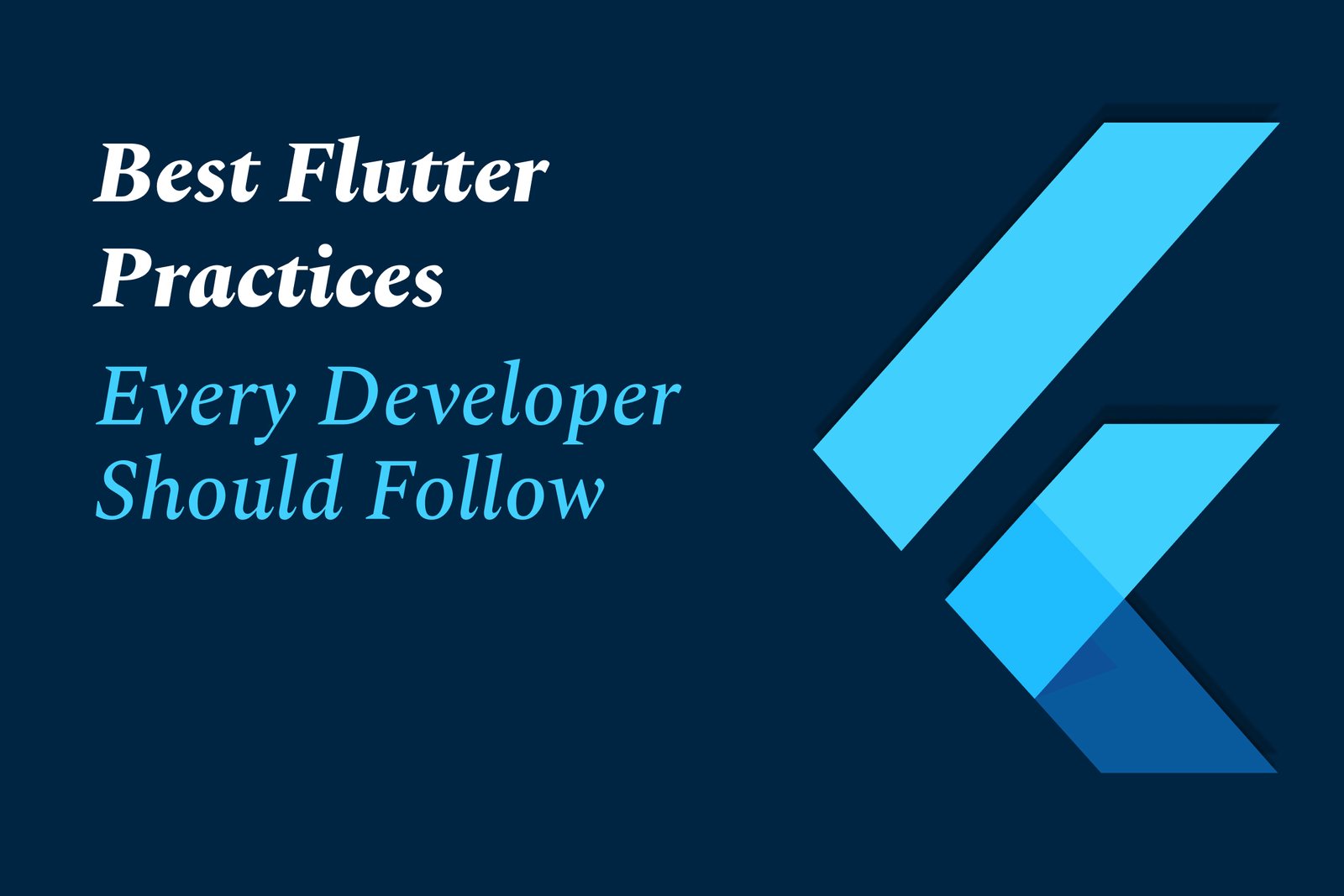Best Flutter Practices Every Developer Should Follow
Best Flutter practices help developers write clean, maintainable, and efficient code by following patterns like clear architecture, proper state management, modular widgets, effective testing, and optimized UI building—ensuring scalable and high-quality app development.
Best flutter practices every developer should follow
1 ) Create Pure Build Functions
Ensure that your widget's build functions are pure, meaning they depend solely on input data and do not cause side effects. This improves testability and reduces bugs.
2 ) Define a Clear App Architecture
Adopt a well defined architecture pattern such as MVVM or BLoC to organize code logically and maintainably. Clear separation between UI, business logic, and data layers makes scaling easier.
3 ) Follow Flutter BLoC Best Practices
Use the BLoC (Business Logic Component) pattern correctly by keeping your blocs lean and focused. Avoid overcomplicating the business logic and use Streams responsibly to manage state.
4 ) Write Tests for Critical Functionalities
Testing is essential, especially for core app features. Implement unit and widget tests to catch regressions early and maintain app quality.
5 ) Prefer SizedBox over Containers When Possible
Use SizedBox for simple spacing and sizing controls instead of Containers unless decoration or padding is needed. This optimizes UI performance by reducing unnecessary widgets.
6 ) Use Streams Only When Necessary
Avoid overusing Streams. Employ them when handling asynchronous data or events that need to emit multiple values over time to prevent unnecessary complexity.
7 ) Refactor Methods into Widgets
Instead of placing lots of UI building code into methods inside a widget, break them down into smaller, reusable widget classes. This boosts readability and reuse.
8 ) Use Raw Strings for Paths and Regex
When dealing with strings such as file paths or regular expressions that contain backslashes or escape characters, use raw strings (prefixed with `r'…'`) to avoid common mistakes.
9 ) Utilize Dart Code Metrics Tools
Leverage tools like Dart Code Metrics to analyze code quality, complexity, and style issues. These metrics support maintaining clean and maintainable Dart code.
10 ) Implement State Management Properly
Choose and apply appropriate state management solutions such as Provider, Riverpod, or BLoC according to your app complexity. Proper state management reduces bugs and improves user experience.
11 ) Follow Proper Naming Conventions
Consistently follow Dart and Flutter naming conventions for classes, variables, methods, and files. Clear and consistent names improve code readability and collaboration.
Following these best practices helps create maintainable, scalable, and efficient Flutter applications ready for future growth and updates.
https://justacademy.in/news-detail/what’s-deprecated-in-flutter-2025
https://justacademy.in/news-detail/new-features-in-flutter-4.0-stable
https://justacademy.in/news-detail/why-flutter-developers-are-in-high-demand-in-india
Related Posts
In 2025, top Angular libraries offer modern, feature-rich components and tools for building dynamic web apps. From powerful data grids to low-code platforms like UI Bakery, these libraries enhance development speed, UI design, and scalability, making them essential for Angular developers.
Migrating from AngularJS to Angular 17 involves gradually upgrading your app by running both frameworks together using tools like ngUpgrade, rewriting components in TypeScript, and adopting Angular’s modern architecture to enhance performance, maintainability, and long-term support.
Angular state management tools help organize and handle app data efficiently, improving scalability and maintainability. Popular options include NgRx for robust, RxJS-based patterns, and newer Signal Store solutions that offer simpler, reactive approaches integrated tightly with Angular’s latest features.
RxJS in Angular empowers developers to manage asynchronous data streams with powerful operators like `forkJoin`, `combineLatest`, and `zip`. Mastering these key operators in 2025 is essential for building efficient, reactive applications that handle complex event sequences seamlessly.
Angular performance optimization in 2025 focuses on improving app speed and responsiveness by using techniques like OnPush change detection, lazy loading, efficient data caching, and AOT compilation. These practices reduce load times, enhance user experience, and ensure scalable, fast Angular applications.
In 2025, Angular remains preferred for large-scale, enterprise apps with its robust, all-in-one framework, while Vue attracts developers seeking simplicity and fast development for smaller projects. Both frameworks excel, with choice driven by project needs and team expertise.
Angular Signals are a new reactive primitive in Angular 16 that enable fine-grained, efficient change detection by automatically tracking dependencies and updating only affected parts of the UI. They simplify state management and boost app performance, revolutionizing Angular's reactivity model.
Angular interview questions to prepare in 2025 focus on core concepts like components, directives, data binding, routing, and dependency injection, along with TypeScript mastery and latest Angular features to ensure strong practical knowledge for building scalable, efficient web applications.
AngularJS reached its official end of support in January 2022, meaning no further updates or security patches. To ensure app security and performance, developers should consider migrating to modern Angular versions or seek third-party long-term support options if immediate migration isn’t possible.
The Angular Roadmap 2025 highlights upcoming features focused on improving developer experience and performance, including zoneless Angular, Signals integration, enhanced Forms, async data handling, improved HMR, and expanded Angular Material/CDK enhancements, driving modern, efficient web app development.










